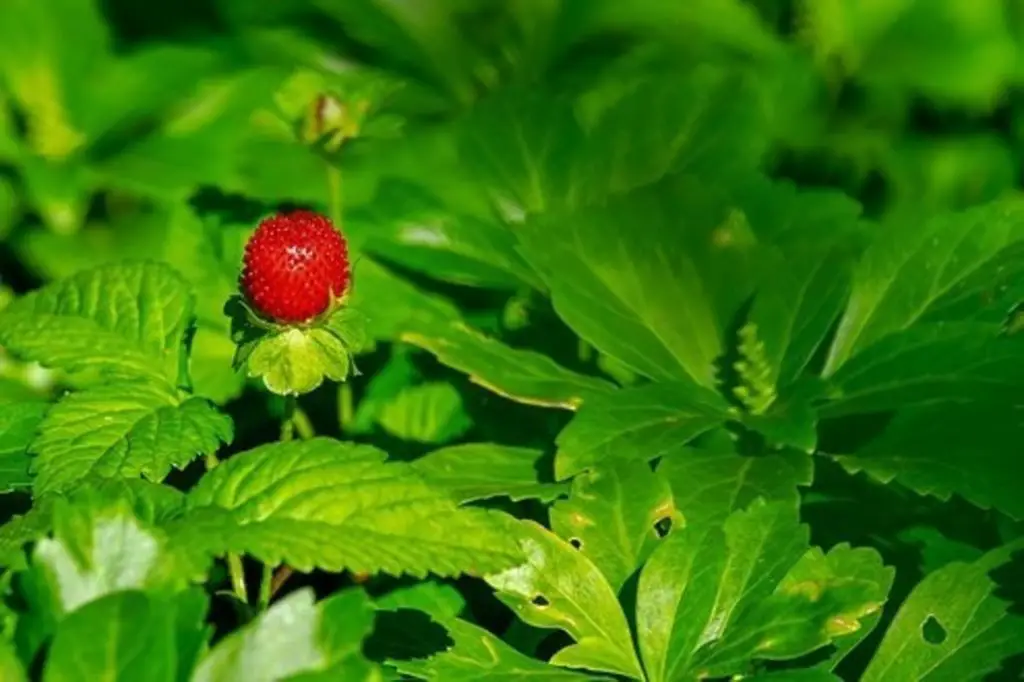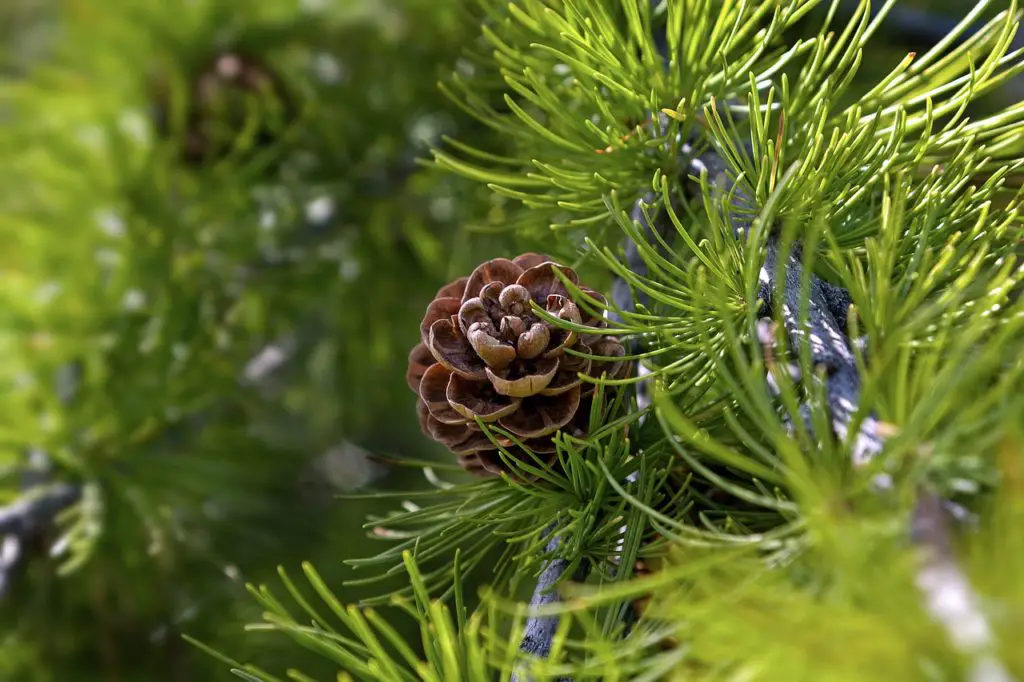If you ask around what is the best mulch for strawberries, you’ll likely get conflicting answers. To answer this correctly, I carried out extensive research. My findings?
The best mulch for strawberries is pine straw. Mulching helps maintain soil moisture and improve its quality by adding acidity. Also, it protects the plants from frost and prevents berries from rotting by keeping them off the moist soil. It’s done in late fall, whereas its removal is in spring.
Read on to discover why you should put mulch around your strawberry plants and what types of mulch materials you can consider. Moreover, you learn the right time to lay down mulch in your strawberry garden.
Also Check – Can You Put Mulch Over Pine Straw?
Should I Put Mulch Around My Strawberry Plants?
It would be best to put mulch around your strawberry plants because it offers plenty of benefits to your strawberry field. Mulch is either an organic or synthetic material that you use to protect and cover your soil.
It helps to conserve soil moisture. Strawberries grown in soil with stable moisture levels are full of flavours and evenly shaped.
Mulching allows the berry patch to be well watered without erosion. Also, it stops weed growth through suppression and helps in maintaining the soil temperature.
Also, mulch keeps the ripening berries off the damp soil, so they don’t rot before you get a chance to pick them.
Fluctuating temperatures in winter cause the soil to freeze, thaw and freeze again. This fluctuation causes the ground to shift and move due to repeated constricting and expansion. As a result, the strawberry plants are heaved from the soil, exposing their roots and crowns to frigid temperatures. Mulching helps to prevent this from happening.
However, ensure that mulch is pulled back from the base of the strawberries during the growing phase. Damp mulch on top of the crowns of the berry plants promotes rot.
Additionally, mulch helps reduce the rain splash on your plants. The splashing usually helps spread diseases and pathogens such as fungi. Strawberries are at risk of attacks from various fungal infections such as anthracnose, powdery mildew, and verticillium wilt.
Continuous splashing of dirty water onto the plants can transmit enough pathogens to kill an entire strawberry patch. The mulch acts as a barrier between the berries and soil-borne contaminants.
Moreover, mulch prevents the berries from mud and protects them from slugs.
What Is The Best Mulch For Strawberries?
The best mulch for strawberries is pine straw. Strawberry plants flourish in areas with good drainage, acidic-to-neutral soils, and with full sun.
Pine straw mulch is highly porous, allowing water to pass through and providing good drainage. It also offers a sufficient cover to help maintain soil moisture. Strawberries grown in soil with steady moisture levels are evenly shaped and flavourful.
Additionally, pine straw helps increase the soil’s acidity as it decomposes.
Pine needles are ideal for strawberries during the growing period and overwintering. During the growing time, a layer of straws at a depth of 1-2 inches helps prevent weed growth and keep the dirt off your berries.
Damage might occur to the strawberry plants in the winter due to the repeated thawing and freezing of the garden. To prevent this, apply a 3-5 inches deep layer of straw. It provides sufficient insulation to keep a hard frost from harming the plant crowns but still permeates water and air.
The mulch raises the ripening berries off the wet soil, preventing them from rotting. Besides, it prevents the strawberries from becoming muddy.
Consequently, pine straw mulch ensures optimum development and yields for your strawberries.
Pine straw mulch lies flat and doesn’t blow away when it’s windy. It also dries quickly after heavy morning dew or rain. The sharp pine needles scare slugs from invading the strawberry plants. Also, it’s slightly dark, matching the rest of the garden in the spring months before the strawberry foliage takes off.
Pine straw mulch is readily available, making it an inexpensive and sustainable mulching option.
When Is The Best Time To Put Mulch Around My Strawberry Plants?
The best time to mulch strawberry plants depends on factors like your climate zone and each year’s particular weather. You mulch the plants once or twice a year.
Also, you mulch the plants in climate zones with frosty winters in early winter or late fall. It protects the plant’s crown and roots from the extreme temperature fluxes and the cold.
Add an extra thin layer of mulch around and under the strawberry plants during spring when the plants leaf out.
During mid-winter, changing temperatures cause the earth to freeze, defrost, and freeze again. These fluctuating temperatures cause the ground to constrict and repeatedly expand. As a result, soil shifts and moves heaving out the berry plants. In turn, this exposes the roots and crowns to the chilly temperatures.
If strawberry plants can experience the initial hard frost of the preceding autumn, they produce a higher yield in early summer. Therefore, most strawberry farmers wait until the initial frost or when the soil temperatures are constantly about 40 F. before laying the mulch.
The best time to mulch is when the foliage flattens. Often this happens when the plants have experienced frosty temperatures. The cold stops the roots from exerting energy on the parts of the plants above the ground.
Mulching your strawberry plants too early may result in crown and root rot in early autumn during wet periods.
Moreover, mulching plants before they adequately harden may make them vulnerable to winter injury.
You can apply a thin, fresh layer of mulch at a depth of 1 inch around your plants in spring. The mulch prevents back rain splash, which spreads soil diseases.
When Should I Remove The Mulch From My Strawberries?
You should remove the mulch from your strawberries in the spring. Delaying to remove the mulch leads to decreased yield and late harvest. Nonetheless, it would be best to balance removal timing with the weather.
It’s important to note that the first flowers in a strawberry plant are essential as they produce the biggest berries.
Each spring is different, and thus, it may be challenging to figure out the best time to remove the mulch from the fields. So, this decision ought to be made depending on the following factors:
- Strawberry Leaf Growth Under The Mulch
The winter mulch on your strawberry plants should remain in place until the plants display signs of growth in spring.
Periodically examine your strawberry plants for the beginnings of leaf growth under the mulch. Pull away the mulch at the base in several areas around your garden. Avoid the edges as the plants here tend to grow sooner than the rest.
Check the early maturing varieties first because they produce leaves first. The new growth might be white or yellow. Remove the mulch if 25% of the strawberries are making new leaves.
- Soil Temperature And Moisture
Before removing the mulch, soil temperatures should constantly be at 40 degrees in the top 2-4 inches.
However, the soil should be dry before you embark on removing the mulch — any heavy machinery on wet ground results in soil compaction.
- The Weather Forecast
If you remove the mulch early, it may encourage the strawberry plants to blossom before the threat of freezing temperatures has passed. A late freeze destroys open flowers and, as a result, significantly decreases yields.
Suppose there’s a risk of a frost during bloom late in the season; you can lightly rake back the mulch over the strawberry plants.
So, check the forecast for your area to determine whether there’s a cold event projected for the next few days following your plans of mulch removal. Consider waiting for a while after the leaves start forming to lower the risk of freezing temperatures harming the plants.
Insulating strawberry plants using mulch is as important during summer as in the winter.
FAQs
Can I Use Regular Mulch For Strawberries?
Yes, you can use regular mulch for strawberries. Nevertheless, you’ll have to remove the mulch when you pull out the old mature strawberry plants and replant new ones. Ideally, it’s done every two to three years.
Can You Use Cedar Mulch For Strawberries?
You can use cedar mulch in your strawberry field. Nonetheless, when applying this mulch, it would be best if you were careful to avoid crowding or covering the crown of your strawberry plant. It’s usually full of fungi which may attack the crowns if placed closely.
Conclusion
It can be disappointing to harvest rotten, muddy, and infested berries. However, determining what is the best mulch for strawberries ensures you get a flavorful and bountiful harvest. Multiple factors such as weeds, diseases, and inadequate soil Ph can stunt the strawberries’ growth during the growing season.
Mulching during winter protects the berries from frost injuries. Also, it acts as a protective barrier that keeps away weeds while retaining soil moisture. It promotes the quality of the soil by boosting its acidity.
Pine straw is the best mulches for strawberry gardens/plants. Most importantly, it’s advisable to mulch your strawberry plants to get an optimal yield during the growing season.


